When it comes to the animal kingdom, there are countless creatures that captivate our curiosity. Whether we’re marveling at their beauty or observing their behavior from afar, there’s no denying the wild allure of these animals. However, some animals are best admired from a distance. While nature is wondrous, it can also be dangerous, and there are certain wild animals that people should steer clear of, much like a contagious disease. Let’s dive into the list of 14 wild animals that humans should avoid like the plague, and find out why keeping our distance is the wisest choice.
The Mighty Hippopotamus
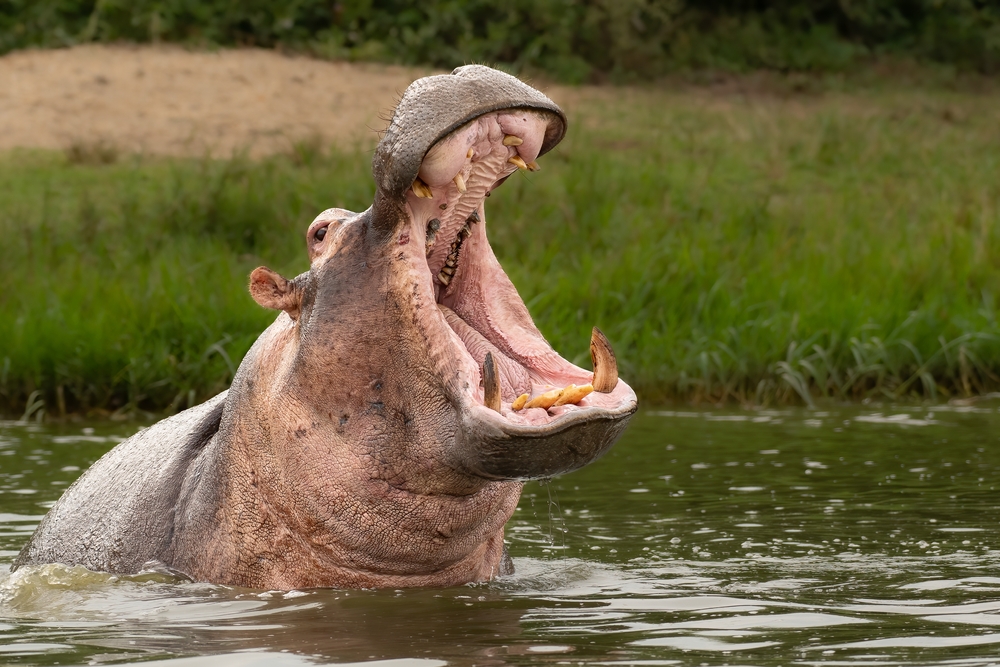
The hippopotamus might look like a clumsy giant, but don’t let its appearance fool you. These hefty animals have a reputation for being one of the most dangerous in Africa. Hippos are notoriously territorial and have been known to attack boats and people who wander too close to their rivers. Weighing up to 3,000 pounds, Fact Animal highlights that they can easily outrun a human on land, reaching speeds of 19 miles per hour. And with their massive jaws, they’re capable of crushing anything in their path.
Despite their aggression, hippos are fascinating creatures. They spend most of their day submerged in water to keep cool under the hot sun. At night, they emerge to graze on grass, consuming up to 88 pounds in a single evening. But when it comes to their space, they don’t take kindly to intrusions. So, if you ever find yourself near a hippo-infested river, it’s best to admire these fascinating creatures from a safe distance.
The Elusive Leopard
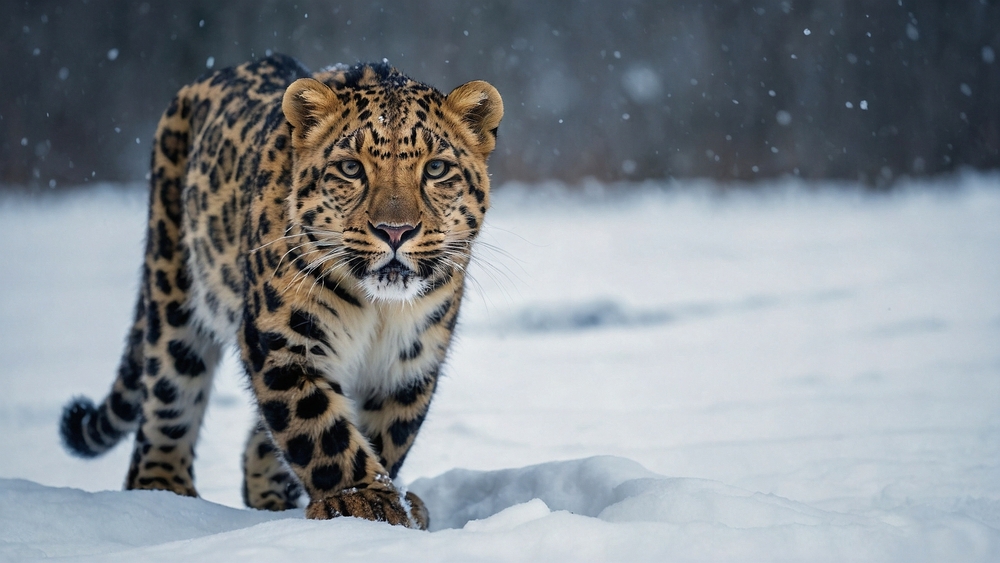
Leopards are the most elusive of the big cats, known for their stealth and solitary nature. Their spotted coats provide the perfect camouflage, allowing them to blend into their surroundings effortlessly. While they usually prefer staying out of the human spotlight, encounters can turn deadly. According to National Geographic, leopards are incredibly strong, capable of dragging prey heavier than themselves up into trees. They hunt primarily at night, making them even more difficult to spot.
Their strength and agility are both awe-inspiring and intimidating. Leopards are known to adapt to various habitats, from savannas to rainforests, which only adds to their mystery. They are opportunistic hunters, capable of taking down a wide variety of prey. But despite their adaptability, they can become dangerous if they feel threatened or cornered. So, while it might be tempting to try and catch a glimpse of these magnificent cats, it’s always better to admire them from afar.
The Fierce Cape Buffalo
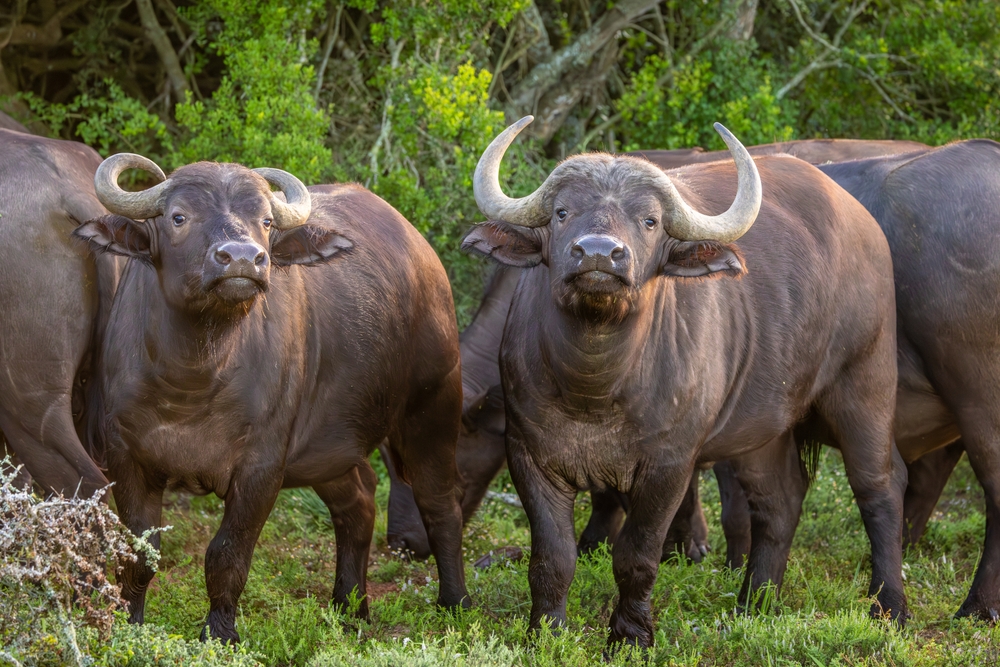
Cape buffalo, often called the “Black Death,” are respected and feared in equal measure. These imposing creatures roam the African savannas in herds, which can number in the hundreds. While they might appear docile as they graze, they are known for their unpredictable nature. When threatened, they can charge with remarkable speed, and their horns can inflict serious damage. Hunters and onlookers alike have learned to respect their boundaries.
Despite their fearsome reputation, Cape buffalo are social animals with a strong herd dynamic. They rely on each other for protection, and when one is attacked, others will often come to its aid. They are also known for their incredible memory, remembering any perceived threats even after extended periods. This means that once provoked, they aren’t quick to forget. So, if you ever find yourself near a herd of Cape buffalo, it’s best to keep a respectful distance and admire their strength from afar.
The Deadly Saltwater Crocodile
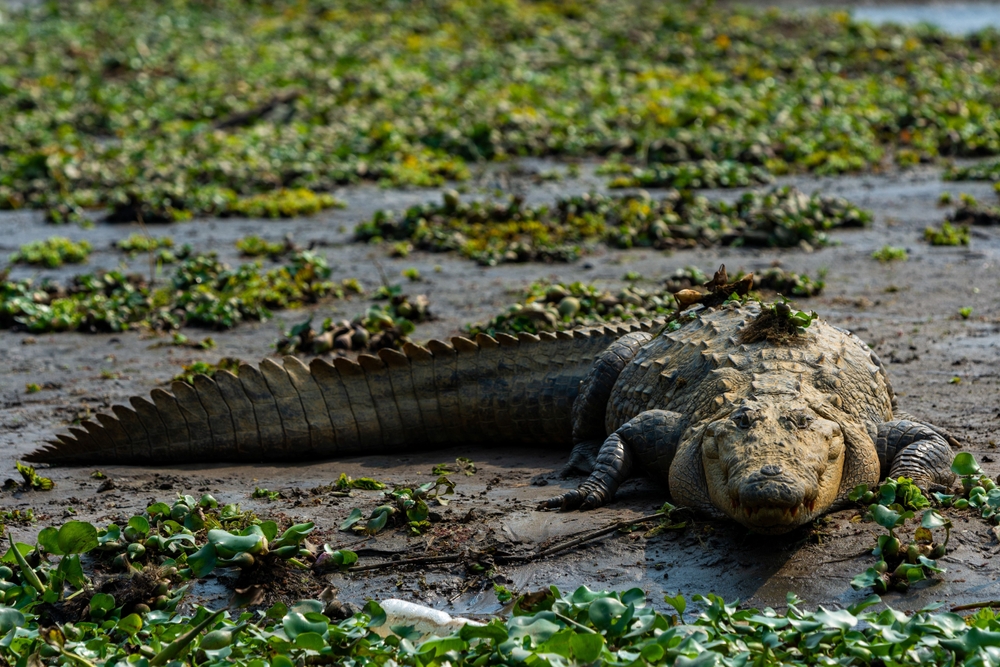
The saltwater crocodile is a living relic, a throwback to the age of dinosaurs with a fearsome reputation to match. Residing in the waters of Southeast Asia and northern Australia, these reptiles are the largest of all living crocodiles. They are ambush predators, lurking just below the water’s surface to surprise their prey. Known for their explosive speed and powerful bite, they can take down animals as large as water buffalo. Encounters with humans can be deadly given their territorial nature.
Their prehistoric appearance and survival instinct are both fascinating and formidable. Saltwater crocodiles are also known for their intelligence and patience, waiting hours or even days for the perfect moment to strike. They have a unique ability to swim between fresh and saltwater, broadening their hunting grounds. Despite their size and strength, they rely on stealth and surprise, making them one of the most efficient predators in the animal kingdom. So, if you’re ever traveling in regions where these ancient creatures reside, it’s wise to steer clear of murky waters.
The Intimidating African Elephant
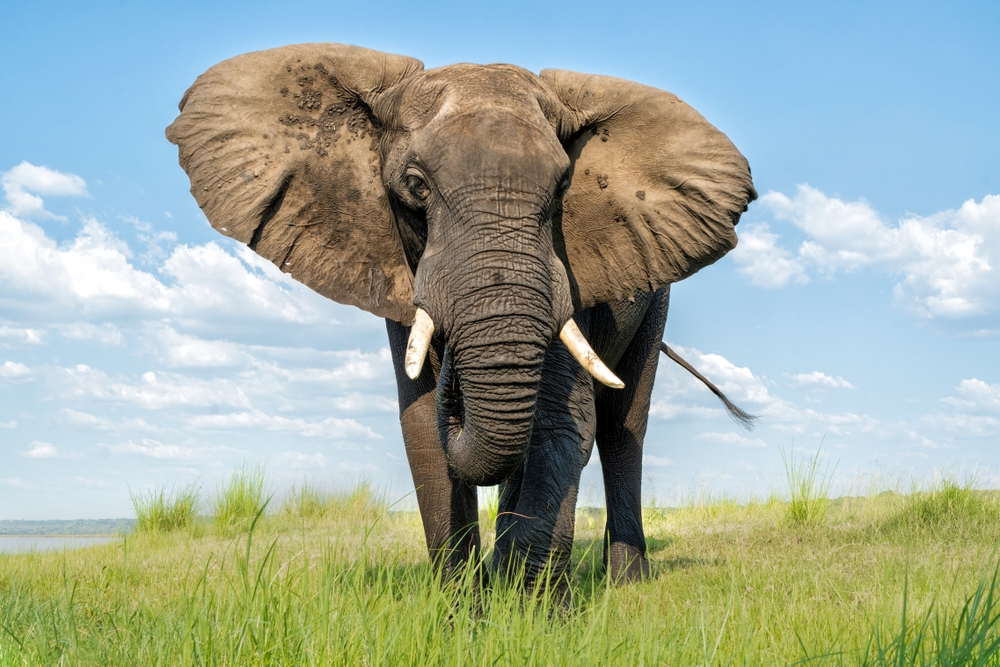
Majestic and intelligent, the African elephant is a symbol of wildlife grandeur. However, their sheer size and strength make them formidable creatures to encounter. Adult elephants can weigh up to 14,000 pounds and stand 13 feet tall at the shoulder. Though they are generally peaceful, their mood can change if they feel threatened or if their young are in danger. They are known to charge with surprising speed, and nothing stands in the path of an angry elephant.
Despite their potential for aggression, elephants are deeply social animals. They form close-knit family groups led by a matriarch, and these bonds are essential to their survival and well-being. Elephants are also incredibly intelligent, known for their problem-solving skills and empathy. They mourn their dead and can remember the locations of water holes for decades. So, while they are fascinating to observe, it’s best to admire these gentle giants from a safe distance.
The Venomous Box Jellyfish
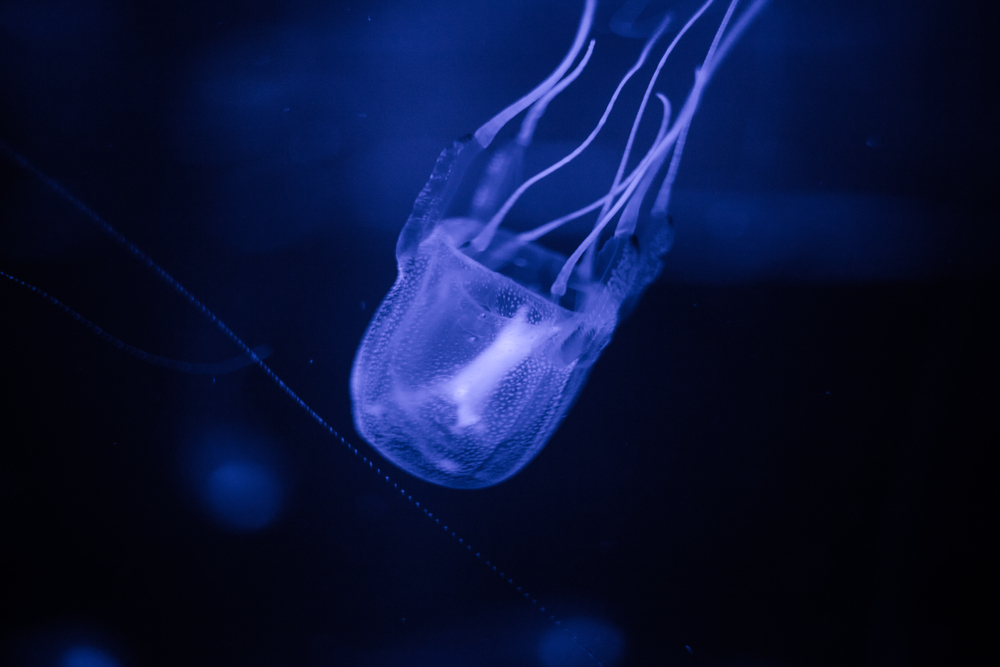
The box jellyfish, with its delicate appearance, is a contradiction in itself. Found primarily in the waters of the Indo-Pacific, this jellyfish is equipped with venom so potent it can cause heart failure in minutes. Their tentacles, which can be over ten feet long, are covered in thousands of stinging cells. This makes them one of the most dangerous marine creatures to humans. The problem is, spotting them in the ocean is nearly impossible due to their transparent bodies.
Despite their deadly sting, box jellyfish play a role in the marine ecosystem. They feed on small fish and plankton, and in turn, are prey for larger species like sea turtles. Their life cycle is fascinating, transitioning from polyps on the ocean floor to the free-swimming medusa form. But their presence in the water is a reminder of nature’s balance between beauty and danger. So, if you’re ever planning a swim in jellyfish territory, make sure you’re aware of the local warnings and stay cautious.
The Aggressive Honey Badger
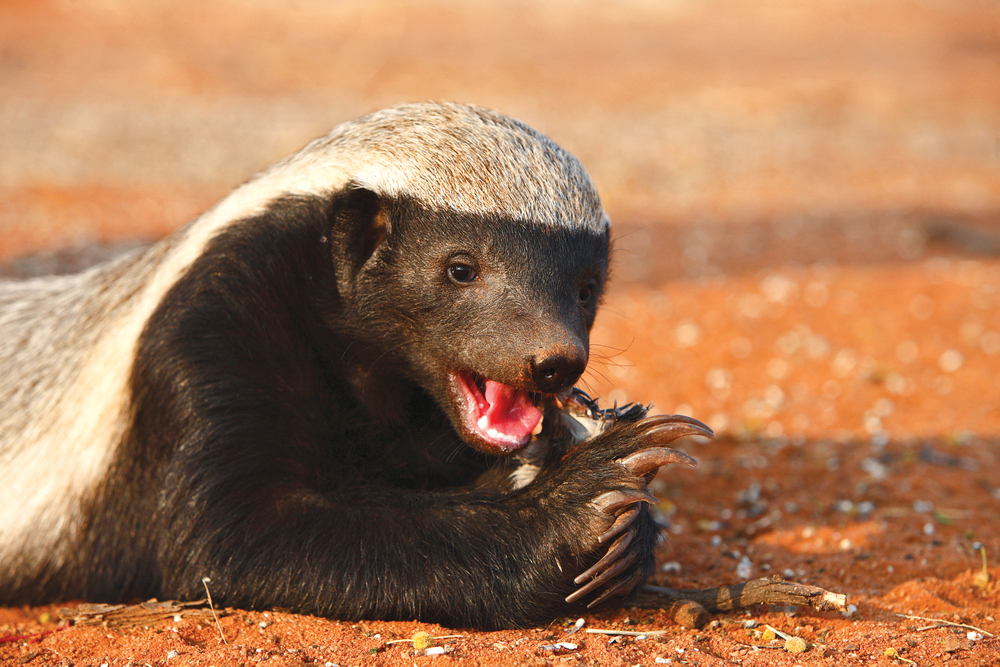
The honey badger, or ratel, is known for its fearless nature and tenacity. Despite their small size, these creatures won’t hesitate to take on predators much larger than themselves, including lions. They are also known for their intelligence, using tools to access hard-to-reach food sources. Honey badgers have thick skin and an impressive resistance to venom, allowing them to survive bites from deadly snakes. Their reputation for ferocity is well-earned.
Beyond their aggression, honey badgers are fascinating in their adaptability and resourcefulness. They inhabit a variety of environments, from grasslands to deserts, and have an omnivorous diet that includes everything from insects to small mammals. Their ability to escape from enclosures has made them notorious among zookeepers. Moreover, their fearless nature is often celebrated in popular culture. But when it comes to personal encounters, it’s best to leave these feisty critters be.
The Ruthless Brazilian Wandering Spider
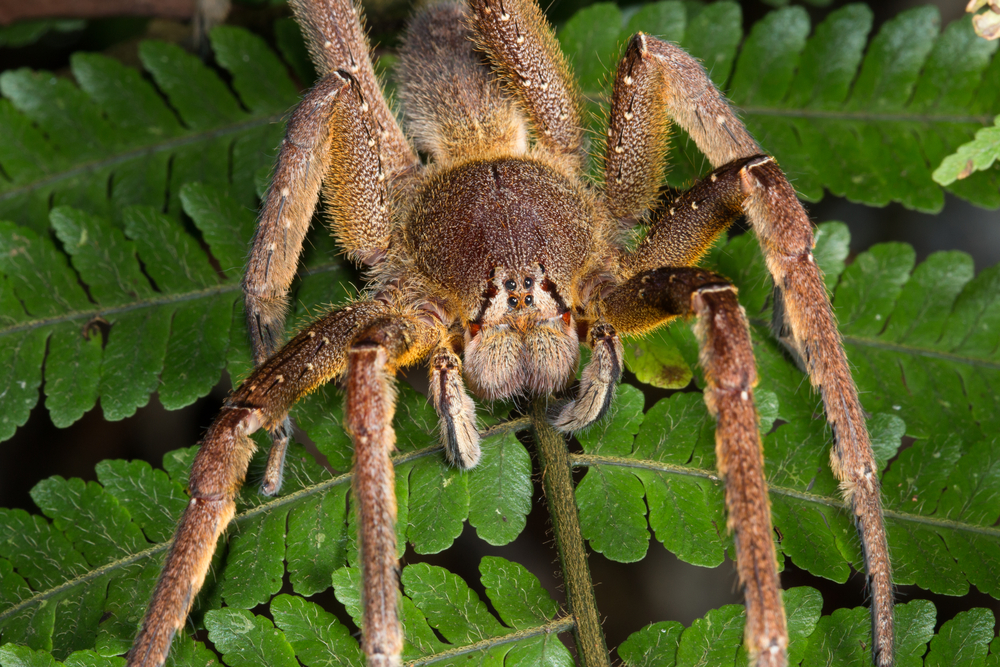
The Brazilian wandering spider holds the dubious honor of being one of the world’s most venomous spiders. Unlike many other spiders that wait for prey to stumble into their webs, this spider actively hunts on the ground, making it more likely to cross paths with humans. Its venom contains a potent neurotoxin that can cause serious symptoms in humans. This spider is often found in populated areas, hiding in shoes and other dark places. While bites are rare, the potential for danger is significant.
Despite its fearsome reputation, the Brazilian wandering spider plays an important ecological role. It helps control insect populations, making it a vital part of its habitat’s food web. These spiders are also an example of the incredible diversity found in the arachnid world. Their behavior and hunting techniques continue to intrigue scientists and enthusiasts alike. But given their potency, it’s wise to exercise caution when exploring areas where these spiders might lurk.
The Stealthy Komodo Dragon
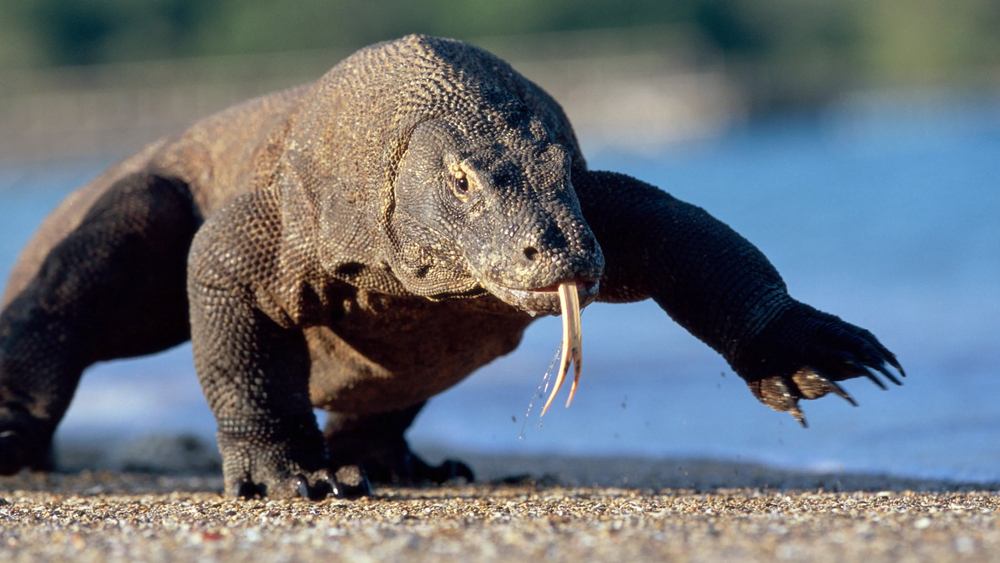
The Komodo dragon is the largest living lizard and a fearsome predator. Found on a handful of Indonesian islands, these reptiles can grow up to ten feet long and weigh over 150 pounds. They have a keen sense of smell and are known for their ambush hunting tactics. Their saliva contains a mix of bacteria and venom, which can lead to fatal infections in their prey. While they rarely attack humans, there have been documented cases, so caution is warranted.
Komodo dragons are a testament to the incredible adaptability of reptiles. They can take down prey much larger than themselves and are known to consume nearly every part of their catch. Their ability to thrive on islands with limited resources is a fascinating study of evolutionary survival. They also play a crucial role in their ecosystems, helping to maintain balance by controlling prey populations. So, while they are a compelling subject of study, it’s best to admire these dragons from a respectful distance.
The Territorial Cassowary
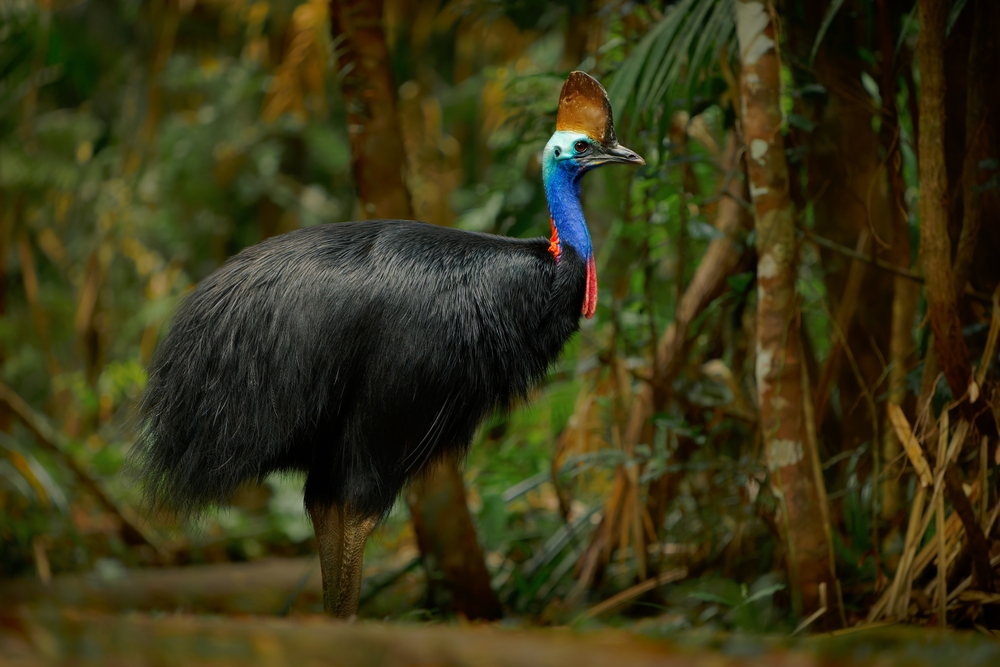
The cassowary, a flightless bird native to the tropical forests of New Guinea and northern Australia, is as beautiful as it is dangerous. Often considered the world’s most dangerous bird, its powerful legs are capable of delivering lethal kicks. Their sharp claws can easily cause serious injuries, especially if the bird feels threatened. Cassowaries are solitary and territorial animals, known to attack when encroached upon. Despite their imposing nature, they are vital to their ecosystem, aiding in seed dispersal.
These birds are an exceptional example of the diverse avian life found in Australia and New Guinea. Their striking appearance, with vivid blue skin and a prominent casque atop their heads, makes them a sight to behold. Despite being flightless, they can run at speeds up to 31 miles per hour, which is faster than most humans. They play a crucial role in their habitats, and observing them in the wild is a privilege. However, keeping a safe distance ensures that both humans and birds remain unharmed.
The Formidable Black Mamba
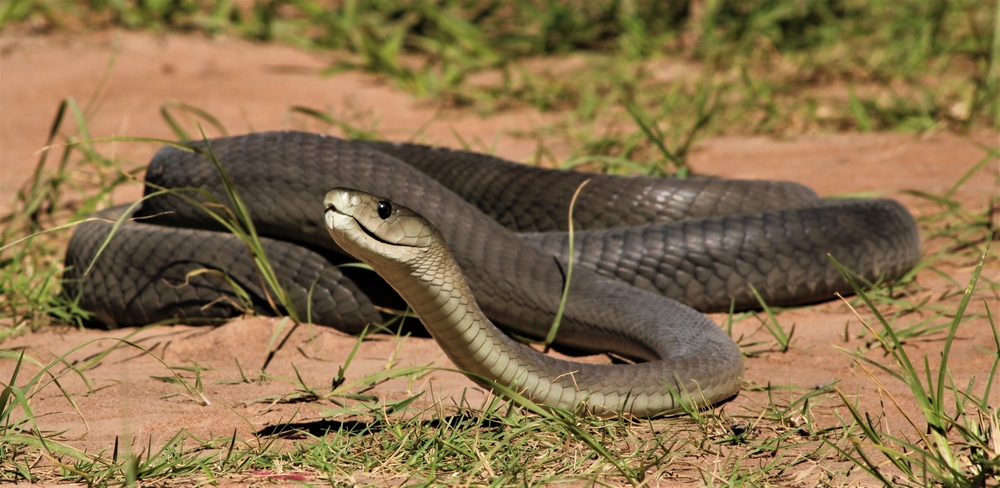
The black mamba is one of the fastest and deadliest snakes in the world. Native to parts of sub-Saharan Africa, this snake can reach speeds of up to 12 miles per hour. Its venom is highly potent, and without antivenom treatment, a bite is often fatal. Black mambas are known for their aggression when threatened, and their ability to strike repeatedly. Despite their fearsome reputation, they are an essential part of the ecosystem, controlling the populations of rodents and other small animals.
Observing their sleek, agile form, it’s easy to understand why these snakes inspire both fear and fascination. The black mamba’s distinctive coffin-shaped head and inky black mouth are unmistakable. They are highly territorial and will defend their space if they feel intruded upon. While they are a critical part of their natural habitat, human encounters should be avoided. If you ever find yourself in black mamba territory, the best course of action is to retreat quietly and quickly.
The Enigmatic Polar Bear
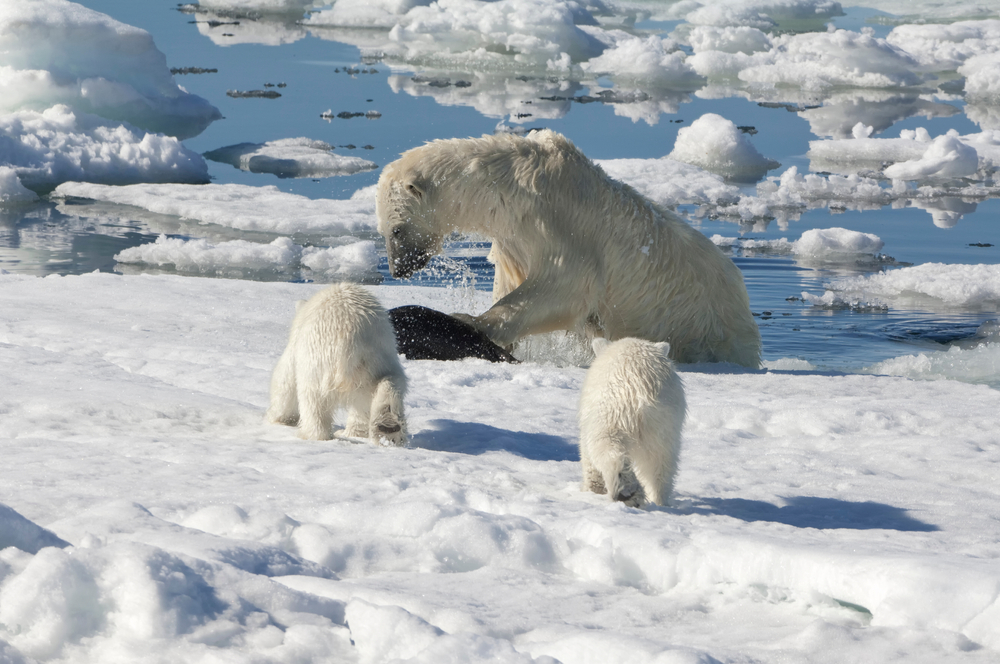
The polar bear is the iconic symbol of the Arctic, yet it’s not just its striking appearance that commands respect. As the largest land carnivore, polar bears are powerful hunters by necessity, thriving in one of the planet’s harshest environments. Their diet primarily consists of seals, which they hunt on the sea ice. Human encounters are rare due to their remote habitat, but they can be dangerous if they feel threatened or are searching for food. With climate change impacting their environment, human-bear interactions may increase.
Beyond their formidable hunting skills, polar bears are a symbol of resilience in the face of environmental challenges. Their thick fur and layer of fat protect them from the freezing temperatures, while their incredible sense of smell can detect seals nearly a mile away. They are also strong swimmers, often paddling for hours in icy waters. Despite their strength and survival skills, polar bears depend heavily on sea ice to hunt and raise their young. As spectators of nature’s wonders, we must respect their space and support efforts to preserve their habitat.
The Ferocious Tasmanian Devil
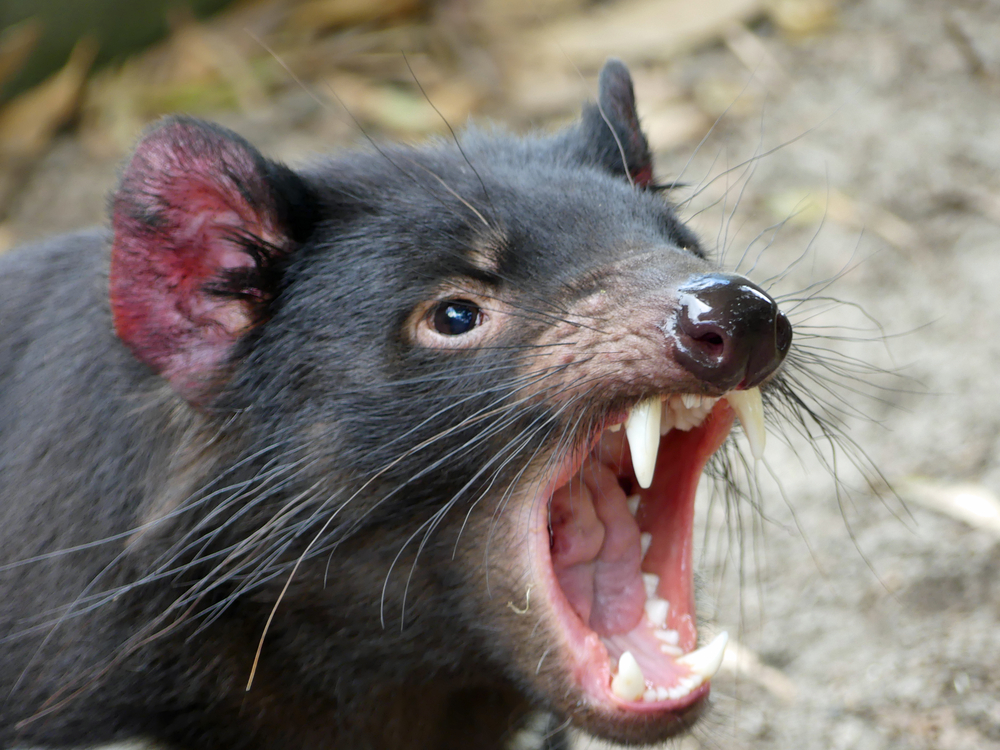
The Tasmanian devil, exclusive to the island state of Tasmania, is a small but fierce marsupial. Famous for its bone-chilling screeches and powerful jaws, this creature can crush bones with ease. While they are not generally a threat to humans, they can become aggressive if they feel threatened or cornered. Their diet is primarily carrion, but they are also known to hunt small prey. Despite their intimidating demeanor, they play a vital role in their ecosystem by keeping it clean of carcasses.
Tasmanian devils are nocturnal, often seen only at night, which adds to their mystique. They have become the focus of conservation efforts due to a contagious cancer that has severely impacted their populations. This has brought increased human interaction, as scientists work to understand and combat the disease. While they might seem fearsome, Tasmanian devils are a critical part of Tasmania’s natural heritage. Observing them from a distance ensures their protection and allows them to thrive in their native habitat.
The Unpredictable Moose
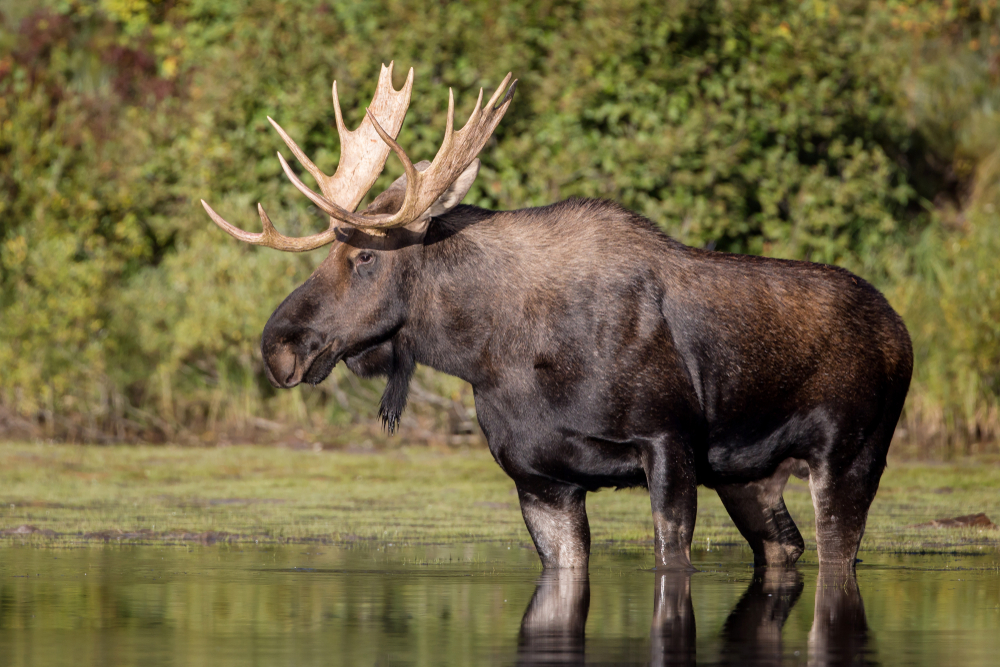
Moose are the largest members of the deer family and are found in the forests of North America, Europe, and Asia. Despite their size and seemingly slow-moving nature, they can become incredibly aggressive if provoked. Bulls are particularly unpredictable during mating season, and cows can be equally dangerous when protecting their calves. With their long legs and powerful bodies, they can charge at surprising speeds. Every year, there are more injuries from moose encounters than from bear attacks.
Despite their potential for aggression, moose are fascinating animals to observe. They are well adapted to their environments, capable of surviving in harsh winters thanks to their insulating fur and ability to browse on a variety of plant materials. Their large antlers, which they shed and regrow annually, are a symbol of their strength and vitality. Moose play an essential role in their ecosystems, influencing vegetation patterns and serving as prey for large predators. While observing them in the wild is a privilege, it’s crucial to maintain a safe distance to avoid any dangerous encounters.
